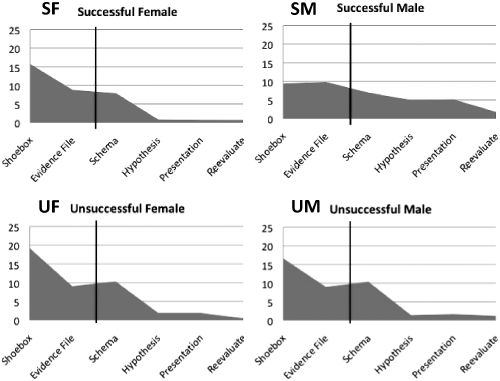Authors
Valentina Grigoreanu, Margaret Burnett, Susan Wiedenbeck, Jill Cao, Kyle Rector, & Irwin Kwan
Abstract
Despite decades of research into how professional programmers debug, only recently has work emerged about how end-user programmers attempt to debug programs. Without this knowledge, we cannot build tools to adequately support their needs.
This article reports the results of a detailed qualitative empirical study of end-user programmers' sensemaking about a spreadsheet's correctness. Using our study's data, we derived a sensemaking model for end-user debugging and categorized participants' activities and verbalizations according to this model, allowing us to investigate how participants went about debugging.
Among the results are identification of the prevalence of information foraging during end-user debugging, two successful strategies for traversing the sensemaking model, potential ties to gender differences in the literature, sensemaking sequences leading to debugging progress, and sequences tied with troublesome points in the debugging process.
The results also reveal new implications for the design of spreadsheet tools to support end-user programmers' sensemaking during debugging.
Sample

The vertical line separates information foraging (how cells and formulas work) from sensemaking. Although information foraging consists of only two steps, it accounted for half to two-thirds of all four participants time.
Publication
2012, ACM Transactions on Computer-Human Interaction, Volume 19, Number 1, March
